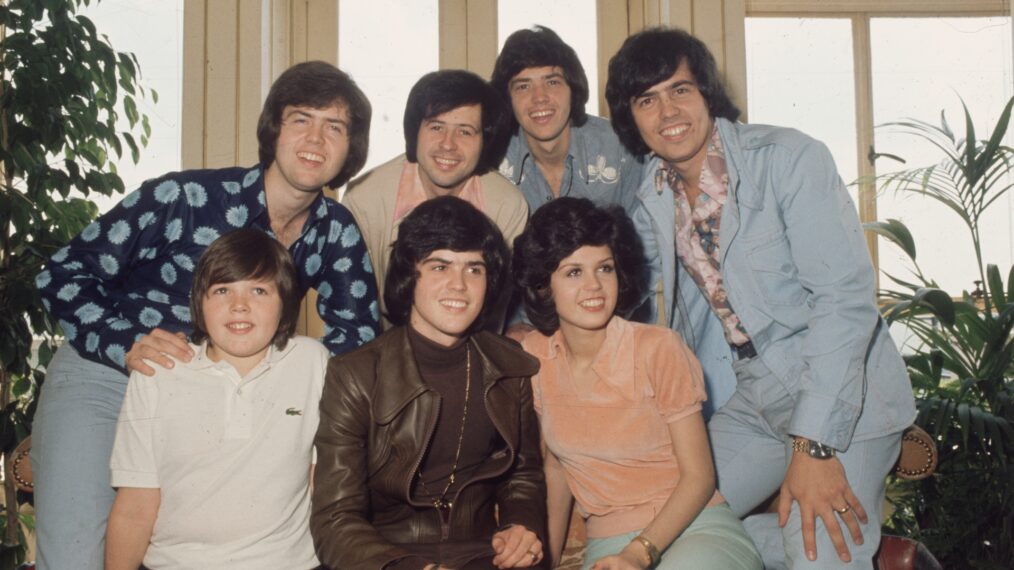What Does Donny Osmond Think of ‘The Osmonds’ Cartoon Series?

If you’re an Osmonds fan, you’ve probably logged many hours watching them on the tube: on the Donny & Marie variety show, which ran from 1976 to 1979; the Osmonds Family Show spinoff in 1979; The Andy Williams Show, where the family appeared as special musical guests throughout the ’60s; the late ’90s Donny and Marie daytime talk show; and even Dancing With the Stars, where Donny Osmond won Season 9. But do you remember that before almost any of that, the Osmonds were the stars of their very own Saturday morning cartoon — one overseen by Rudolph the Red-Nosed Reindeer creators Rankin/Bass?
The Osmonds cartoon series debuted on Sept. 9, 1972, shortly before the release of the Crazy Horses album. The show was conceived after the success of Jackson 5ive, a Rankin/Bass animated series documenting the adventures of “rival” family band the Jackson Five, which aired from Sept. 11, 1971 to Oct. 14, 1972.
But while professional voice actors played the Jackson brothers (though Diana Ross did voice herself in the pilot), on The Osmonds, the Osmond brothers voiced their own characters, and performed multiple songs in each episode — in addition to the show’s theme song, a shortened version of the hit “One Bad Apple.”
Each week, the boys would travel to a far-flung location, accompanied by talking dog Fuji (played by voice actor Paul Frees). Whether they were in Paris or Monte Carlo, the brothers would encounter adventure — often after Jimmy and Fuji were drawn into a mysterious situation or misunderstanding with the local folks.
The series ran for 17 episodes, with the last airing on Dec. 23, 1972; in it, the Osmonds finally complete their world tour and return home to Utah. The series helped boost record sales and the band’s profile, and had a lasting impact on the Osmonds themselves — according to Rick Goldschmidt, official Rankin/Bass Productions historian/biographer and author of multiple books on the subject, “Donny still uses the imagery [from the series] on his video screens in his act.”
But what does Donny think about the show today?
Decades later, Donny Osmond’s memories of shooting The Osmonds cartoon remain a formative memory — and mark the time he first learned how cartoons were made.
According to Goldschmidt, “When I interviewed Donny for my book, the 20th anniversary edition of The Enchanted World of Rankin/Bass [Miser Bros Press], he said, ‘As a young teenager, I always watched cartoons, but I never really knew how they were done. I remember going into the studio, not completely understanding what I was about to do, to record all of our vocal tracks, and then later on watching this character speaking with my voice on television. I vividly remember the presence of Paul Frees with us in the studio. In fact, I think he took the seat right next to me. When he stepped up to the microphone to do the voice of Fuji the dog and then a minute later did the voice for Hortense Bird (my greatest fan), two completely different characters, I was completely in awe of the talents of this man.'”
How does Donny think the series impacted the band’s career and fans?
While the series isn’t as well known today as the classic Donny & Marie show is, Donny Osmond thought the show made a real impact in how the Osmonds developed their career.
As he told Goldschmidt during their interview for the book, “At the time we did the series, I wasn’t aware of the impact it would have on our fans. There were only 17 shows produced, and it was our feeling at the time that it was our records that were the big contributing factor to our success. We later discussed our respective cartoon series with the Jackson Five with our one and only meeting with them at a concert at the CNE in Toronto. There was always this competition factor with our fans at the time, and discussions on these two series. The series was a lot of fun to record, but it is even more fun when people come up to me today, years and years later, and remember the series with fondness. As far as I am concerned, I think Rankin/Bass did a lot for the Osmonds, particularly for people remembering us from the ’70s.”
Find out more about the Osmonds and other Rankin/Bass classics in The Enchanted World of Rankin/Bass, available for purchase here.

Pop Music Legends
August 2017
Dedicated to the sights, sounds and stories of the golden age of pop.
Buy This Issue
